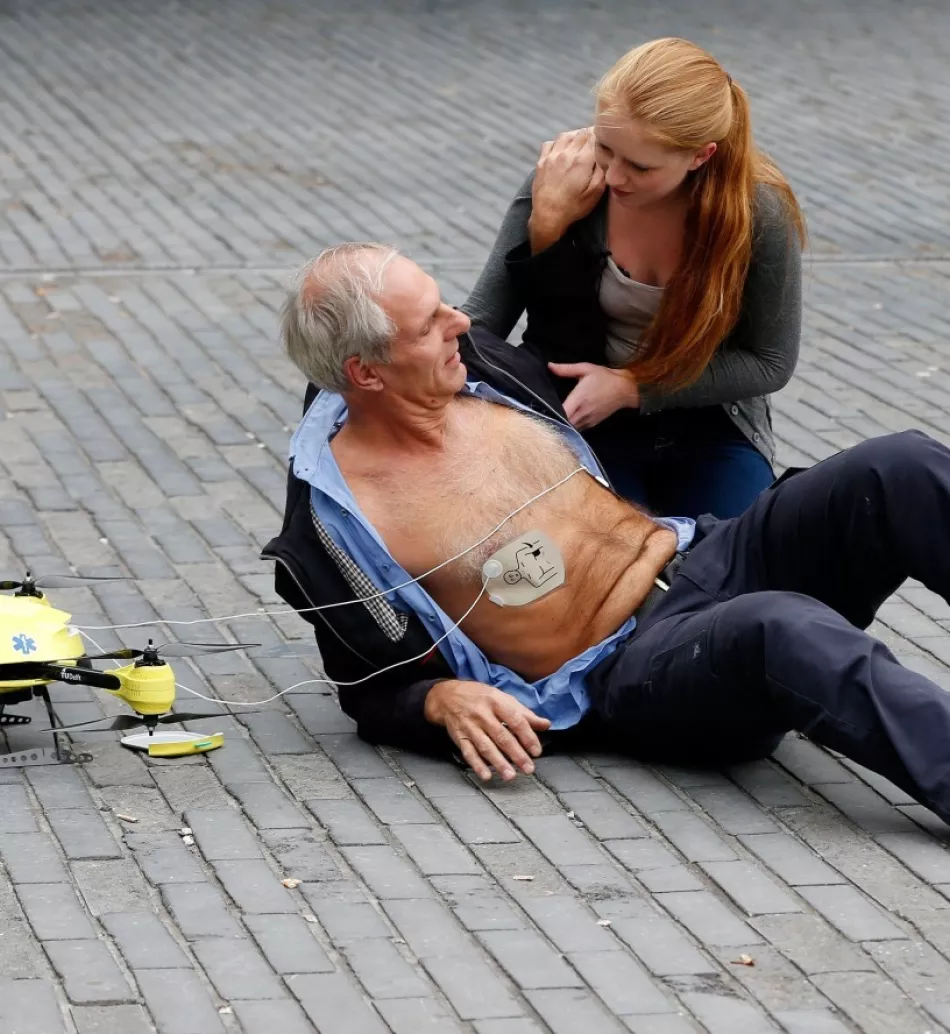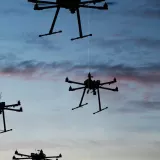A drone may save your life one day

The year is 2020. Imagine that you are having a heart attack. You or the nearest person calls the emergency number.
Within a minute a drone lands next to you with a defibrillator; you have just been saved. This was the scenario im- agined by Alec Momont, graduate student from Delft Technical University’s Faculty of Industrial Design Engineering.
“Because of their military history, drones do not yet have a positive image, explains the young engineer, although they can be used for ex- tremely valuable applications. My first idea was to prove it.” Amongst potential applications presented in his graduate work, aptly named “Drones for good”, Alec Momont focused on the “drone ambulance”. He has designed a working prototype capable of delivering an automated defibrillator.
The drone could potentially carry any essen- tial medical equipment weighing under 4 kg: an insulin kit in case of a diabetic attack, an oropharyngeal mask in case of acute res- piratory distress or an inflatable life jacket to prevent drowning.
The emergency system would be based on a network of drones. “Strategically positioned, approximately one every 12km2, the ambulance drones would be activated via an emergency call centre.” The caller would be located by his telephone signal and his data transmitted to the drone which would take off and rush at 100km/h towards the scene of the emergency. It could even alert passers–by upon arrival.
“On the spot, through two-way audio and video communication, an emergency rescue specialist would instruct the patient or the nearest person on how to use the emergency kit.” The patient would then receive appropriate – often life-saving – care long before the ambulance arrives.
“By providing help in less than a minute, the system can improve cardiac arrest survival rates from 8% today to 80%”, estimates Alec Momont. Some 800,000 people suffer a cardiac arrest in the EU every year, entailing estimated health care costs of 200 billion euros.
Alec Momont’s drone ambulance prototypes are now being field tested for 6 months. The system’s reliability (safety, precision, speed) is being studied. It is also important to test human reactions upon seeing a drone arrive and upon hearing instructions transmitted through the device. The drone’s design aims at optimizing this interaction: small size, soft lines, local emergency service colours. The drone should be a reassuring presence to be taken seriously.
Provided that legal regulations keep going in the right direction, a drone ambulance could possibly save your life in five years’ time.
For the time being, Alec Momont’s project has had major success. He has had good media coverage and his video has had nearly 2 mil- lion viewings on YouTube. In any case, society seems to be fairly interested in the idea of drones doing good.


